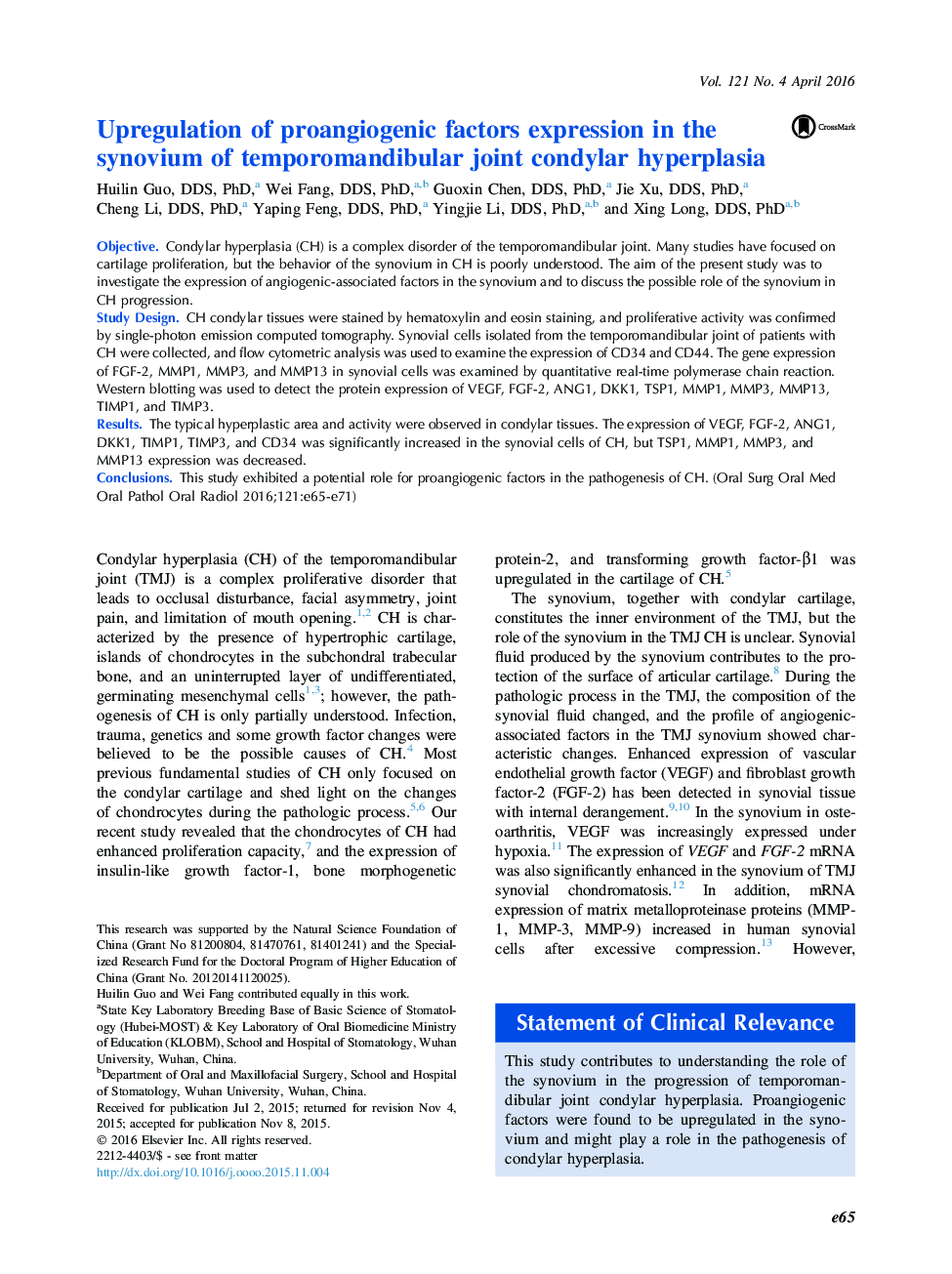| Article ID | Journal | Published Year | Pages | File Type |
|---|---|---|---|---|
| 3166615 | Oral Surgery, Oral Medicine, Oral Pathology and Oral Radiology | 2016 | 7 Pages |
ObjectiveCondylar hyperplasia (CH) is a complex disorder of the temporomandibular joint. Many studies have focused on cartilage proliferation, but the behavior of the synovium in CH is poorly understood. The aim of the present study was to investigate the expression of angiogenic-associated factors in the synovium and to discuss the possible role of the synovium in CH progression.Study DesignCH condylar tissues were stained by hematoxylin and eosin staining, and proliferative activity was confirmed by single-photon emission computed tomography. Synovial cells isolated from the temporomandibular joint of patients with CH were collected, and flow cytometric analysis was used to examine the expression of CD34 and CD44. The gene expression of FGF-2, MMP1, MMP3, and MMP13 in synovial cells was examined by quantitative real-time polymerase chain reaction. Western blotting was used to detect the protein expression of VEGF, FGF-2, ANG1, DKK1, TSP1, MMP1, MMP3, MMP13, TIMP1, and TIMP3.ResultsThe typical hyperplastic area and activity were observed in condylar tissues. The expression of VEGF, FGF-2, ANG1, DKK1, TIMP1, TIMP3, and CD34 was significantly increased in the synovial cells of CH, but TSP1, MMP1, MMP3, and MMP13 expression was decreased.ConclusionsThis study exhibited a potential role for proangiogenic factors in the pathogenesis of CH.
